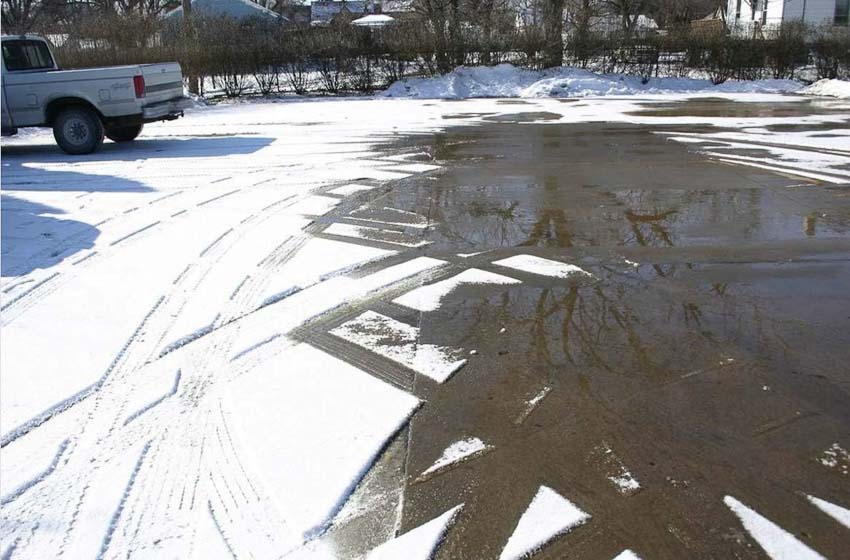Environmentally conscious homeowners are switching to salt-free ice melt for a variety of reasons. Learn about the ecological impacts of salt-based deicers and how using environmentally friendly salt free deicer alternatives is better for your Northeast yard and garden.
What is Salt-Free Deicing?
Most deicers found online and in retail locations around the Northeastern United States are some type of salt, whether it’s sodium chloride (rock salt) or a safer alternative like calcium magnesium acetate.
Unfortunately, there are several drawbacks to using chemical deicers, which is why salt-free deicing is becoming more popular.
Definition and Overview
In the US, over 10 million tons of chemical deicers are used on roadways. These salt-based deicers end up in the soil, groundwater supplies, and nearby water sources, including streams and rivers.
Indeed, even the salt you use in your yard to melt the ice on your driveway and sidewalks eventually makes its way into the ecosystem. It moves with the water as it melts the ice, contaminating the soil in your yard and leaching into nearby water sources.
Comparing Salt-Based vs. Salt-Free Deicer Alternatives
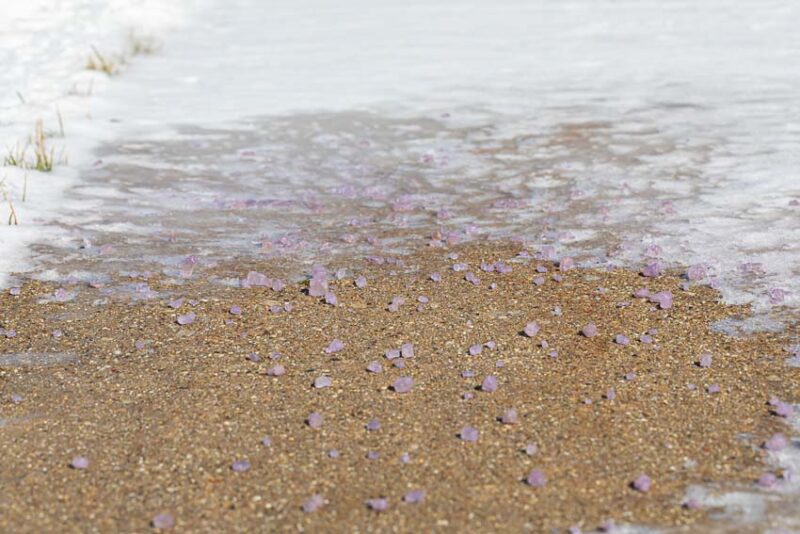
Salt-free deicers tend to be more expensive than salt-based chemicals. However, even though it costs more, it’s usually not enough to be cost-prohibitive for most homeowners.
Even though you’ll spend more money on salt-free deicer alternatives, you won’t have to worry about many negative effects of chemical deicing practices.
The Impact of Standard Deicing Practices
While salt-based deicers are the least expensive way to melt ice, there are several disadvantages. To gain a broader perspective, consider road salt’s environmental and infrastructure impacts.
Environmental Implications
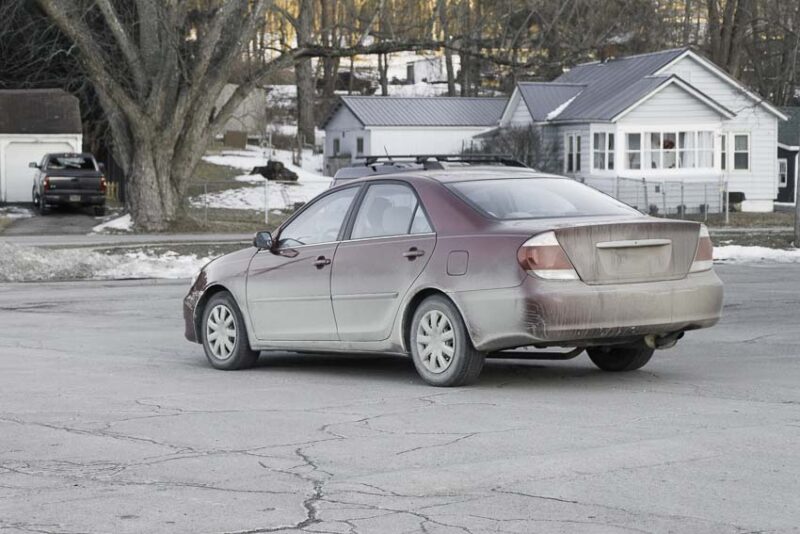
Once salt-based deicers are applied to roadways, sidewalks, and parking lots, the chemicals are carried to nearby water sources through runoff.
Water Contamination and Aquatic Life
Freshwater sources that are home to all types of aquatic life contain many sensitive species, and aquatic creatures like salamanders, frogs, and fish are affected in various ways.
Salinization alters their reproductive cycles and interferes with their growth and development. Damage to these species can cause a domino effect and disrupt the entire ecosystem.
Soil Salinization and Plant Damage
The changes in water chemistry also adversely affect plants, sometimes causing algal blooms that lead to dead zones, further affecting the food chain.
In the ground, soil salinization has several impacts. Mineral imbalances disrupt the balance of nutrients in the soil and affect their availability to plants. As soil salinization increases, the ability of plants to absorb water and nutrients decreases.
Plant damage caused by deicers varies depending on how badly the soil or nearby water sources are contaminated. Here are some symptoms of salt damage to plants:
- Dried or brown leaves and needles
- Loss of foliage
- Premature plant death
- Compacted soil
You may notice signs of plant damage on your lawn, evergreen shrubs, and perennials, such as burnt turf and tree foliage in your yard.
Infrastructure and Property Damage
While the environmental damage caused by salt-based deicers is significant, it’s easier to quantify the damages caused to infrastructure and property. According to the Environmental Protection Agency , salt corrosion causes about $5 billion in property and infrastructure damage annually.
Corrosion of Roads and Bridges
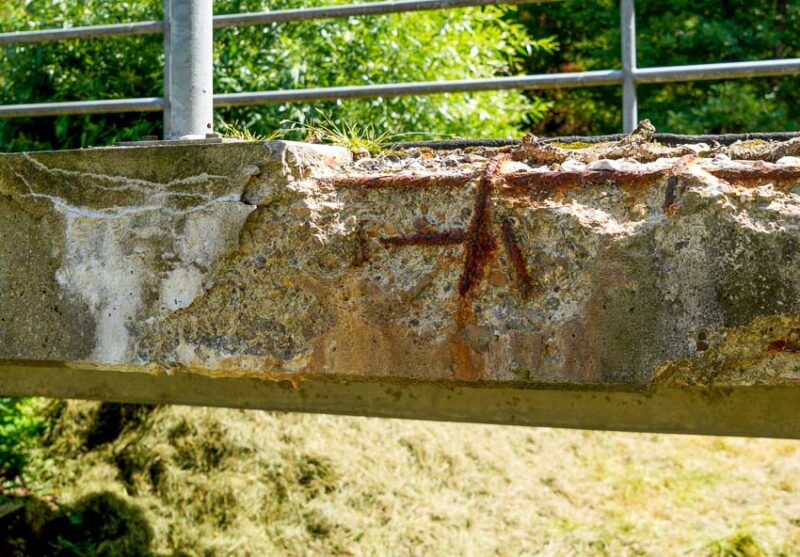
Most of the damage caused by chemical deicers is due to corrosion of roads and bridges. Rock salt is the least expensive chemical deicer and the most commonly used, but unfortunately, it’s also the most corrosive.
Degradation of Concrete and Paving Materials
Concrete and asphalt are porous substances, and the reaction with salt-based deicers weakens the chemical bonds that hold them together.
Additionally, ice melts into water and then seeps into pores and cracks, breaking it down from the inside. This deteriorating action is compounded over time, resulting in potholes.
Benefits of Salt-Free Deicer Alternatives for the Environment
Northeast winters can be brutal, and there may be as many as 30 to 40 weather events over the course of the winter. Using salt-based deicers to melt all that ice and snow for months on end is hard on the environment.
Learn more about the benefits of choosing a no-salt ice melt for your driveway and sidewalks.
Water Protection
It might not seem like much, but small actions add up to effect change globally. Reducing your individual environmental impact is one of the best ways to contribute to watershed protection.
Reduced Salt Runoff into Streams and Rivers
When you use salt-based chemicals, the salt particles flow in with melted water, polluting streams, rivers, and groundwater supplies. By using salt-free ice melt, you can reduce your impact on nearby water sources.
Protection of Aquatic Ecosystems
Aquatic ecosystems are more vulnerable than other types of ecosystems, which is why riparian areas are protected. By using less salt, you can reduce the damage caused to plants and animals in aquatic ecosystems.
Soil Health Preservation
High salt concentrations in the soil are a serious environmental problem that road maintenance and farming cause. When you employ salt free deicer alternatives, you can do your part to avoid damaging the soil.
Avoiding Soil Structure Damage
When soil salinity increases, the structure of the soil changes. The salt causes fine particles in the soil to bind together, which makes the soil compact. Plant water uptake becomes very low in soils with high salinization, even if water is available.
Maintaining Natural Soil pH
Salt in the soil changes the pH levels, contributing to plant damage, including lawns, shrubs, trees, and perennials. Switching to a salt-free deicer will make maintaining a natural soil pH easier.
Benefits of Using Salt-Free Deicer Alternatives for Your Lawn
In the Northeast, spending time each spring reversing salt damage on your lawn is common practice. Discover the benefits of non-salt ice melt, and avoid replacing dead grass and topsoil every spring by using an ice melt that doesn’t kill grass.
Healthier Grass and Plants
Unless they turn brown and die, many people don’t notice the stress their plants are under. If the parts of your lawn close to your driveways and sidewalks fail to thrive, it could be due to the salinization of your soil.
Saltwater runoff on your lawn impacts the pH of your soil, which affects the uptake of nutrients and weakens the root system of your grass. Using ice melt safe for grass will improve the soil in your yard and help promote stronger root systems.
Soil Fertility and Texture Maintenance
Soil health is the foundation for a lush green lawn and beautiful yard, and using salt-based deicers can cause problems like soil compaction, reduced nutrient availability, and changes in soil pH.
With lawn-safe ice melt, you can avoid these problems, and your soil will teem with beneficial organisms like microbes and earthworms. Add some natural fertilizers or compost to your soil, and your lawn will be one of the first to turn green in the spring.
Different Types of Northeastern Salt-Free Deicer Alternatives
Cold winters in the Northeast make it hard to find a suitable ice melt, but the truth is that even salt-based ice melts have limitations. Learn more about different types of salt-free deicer alternatives.
Beet Juice and Cheese Brine Solutions
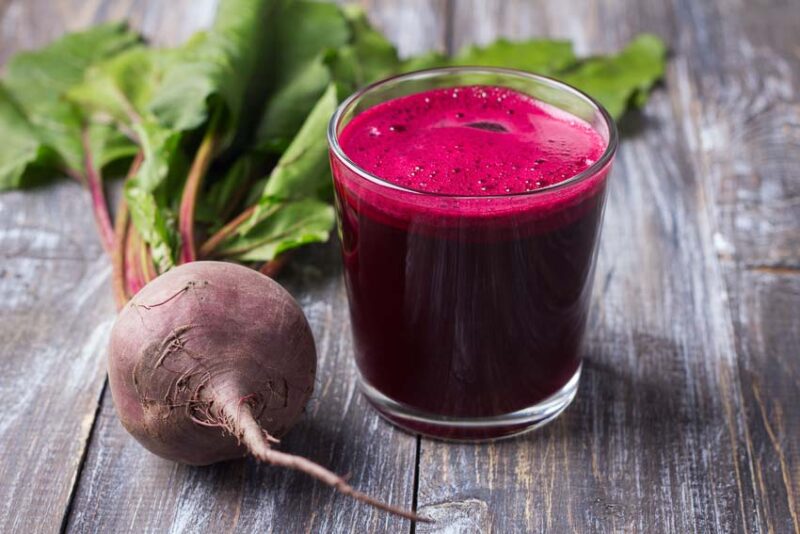
Beet juice and cheese brine solutions are ice melts made from food processing waste, and they are an eco-friendly alternative to traditional ice melts.
How They Work
The sugar beet is used to make sugar, and beet juice is a byproduct of the refining process. Similarly, cheese brine is a byproduct of cheese making. These products have been used as salt alternatives by road departments all over the United States for several years.
Beet juice is combined with a salt solution, and the combination of the sugar and salt can melt ice down to about -23°F (-31°C). Cheese brine already has a salinity of about 25% and can be used without adding additional salt. It’s an excellent way to eliminate excess agricultural waste and costs less than traditional salt deicers.
Application and Efficiency
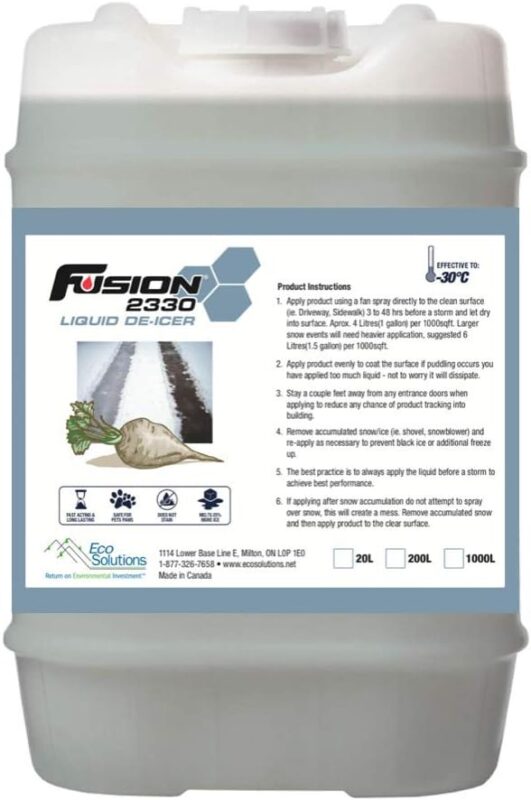
Cheese brine and beet juice are liquids. For residential use, apply beet juice deicers like Fusion 2330 Liquid Deicer with a liquid sprayer. This is the same product used by road departments in the US and Canada, and it’s an environmentally safe ice melt that won’t harm your pets.
Sand and Kitty Litter
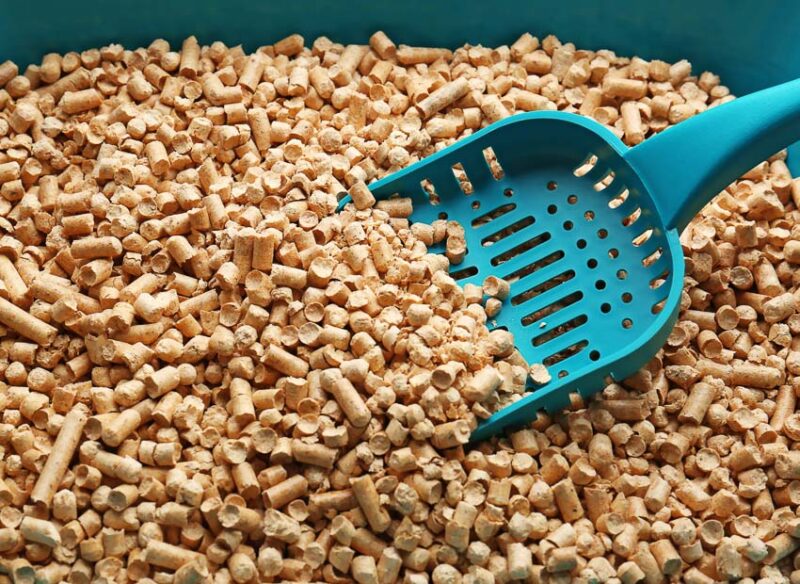
Products like sand and kitty litter don’t actually melt your ice, but they will make it safe to walk on, and they work in any temperature.
Traction Benefits
Sand and kitty litter are clear winners in making your sidewalks and driveways safer. Simply sprinkle it on top of your walkway and driveway after you’ve cleared the snow, and then sweep it away when the ice has melted.
Limitations and Best Use Cases
Kitty litter and sand are the most eco-friendly ice melt alternatives, and they are safe for concrete, lawns, and pets. However, they don’t melt ice, and you can track them into your house. Still, one of the best reasons to use sand is that its dark color will absorb heat from the sun, which helps to melt the ice on your sidewalk.
Alfalfa Meal and Coffee Grounds
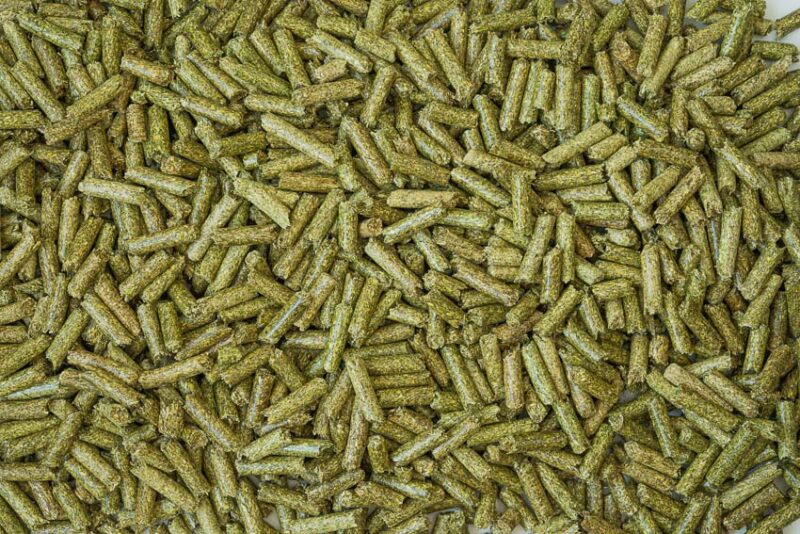
You can use both alfalfa meal and coffee grounds to treat the ice on your sidewalk and driveway.
Natural Heat Production
Like sand, coffee grounds don’t melt ice, but they do absorb heat from the sun, which can help melt ice. Coffee grounds also provide plenty of natural traction for a non-slip surface.
Alfalfa meal is a natural organic soil amendment made from dried, ground alfalfa. It adds nitrogen to your soil and is generally weed-free. It has many of the same benefits as coffee grounds when used as an ice melt.
Distribution Techniques
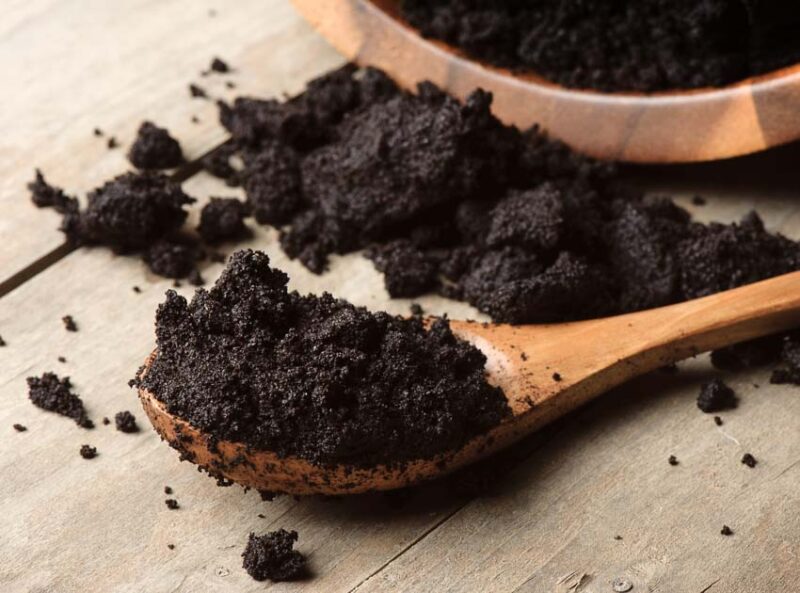
Sprinkle coffee grounds or alfalfa lightly over your walkway. Once the area has melted, you can sweep up any excess and put it on your compost pile.
How to Use Salt-Free Deicer Alternatives for Your Lawn or Yard
Discover the best application techniques for de-icing salt alternatives, including handling and storing them.
Application Techniques
No matter what type of ice melt product you apply, some helpful techniques will make your job easier.
- When snow is in the forecast, apply a thin layer of ice melt before the storm hits.
- Identify high-risk areas, like steps.
- Once the storm is over, clear the snow and re-apply ice melt to your driveway and sidewalks.
Most people over-apply ice melt products, which is wasteful and doesn’t make them work faster or better.
Storage and Handling Recommendations
Storage recommendations will vary depending on the type of ice melt you are using, but generally, it’s best to find a dry location indoors. Keep products like cheese brine and beet juice sealed for best results.
As a safety precaution, avoid keeping any type of ice melt products where small children or pets can access them.
FAQs About Northeastern Salt Free Deicer Alternatives
Are salt-free deicers safe for pets?
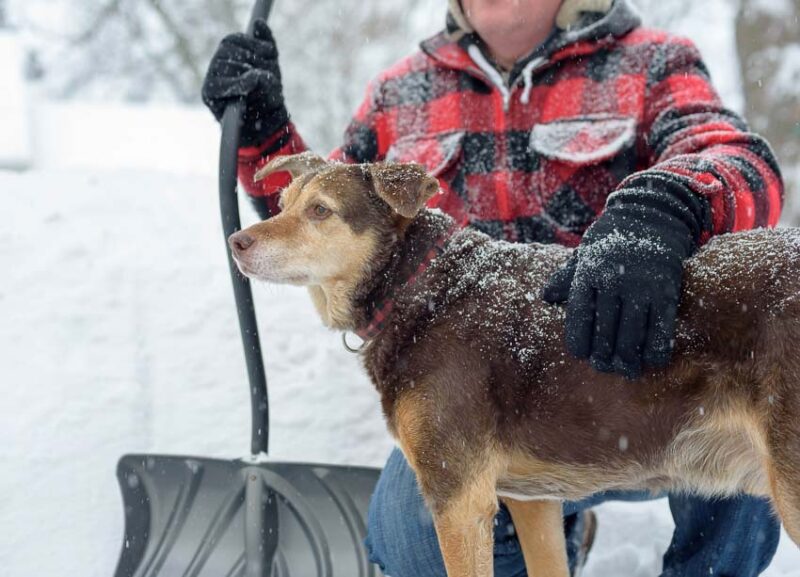
Products like sand or kitty litter are the best salt-free deicers that are safe for pets. You can also find chemical deicers that are salt and chloride-free and, therefore, safe for pets. One of the most popular is Morton Safe T Pet .
How much salt-free deicer should I use compared to traditional salt?
How much deicer you need depends on the type of product you are using and whether it’s granular or liquid. Brine, which is a deicer that’s better for the environment than sodium chloride, is a liquid mixture you spray on.
Can I make DIY salt-free ice melt solutions at home?
There are several effective homemade ice melts that you can DIY. In fact, one of the easiest and most popular is a 3:1 vinegar and water mixture that you can spray on your steps and sidewalks.
Are salt-free deicers more expensive than traditional methods?
Most salt-free deicers are more expensive than traditional deicers, but not enough to be a problem for most homeowners. One of the least expensive alternatives is coarse sand.
Do salt-free ice melt alternatives work in extreme cold?
All types of deicers have limits when it comes to extremely cold temperatures. One of the best salt-free ice melts is Safe Paw Salt-Free Ice Melt . It works in temperatures down to -2°F (-18°C) and is safe for concrete and your pet’s paws.

